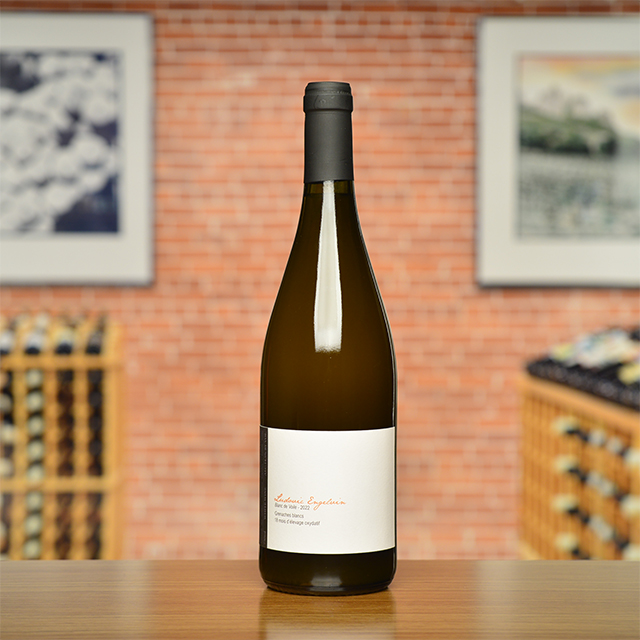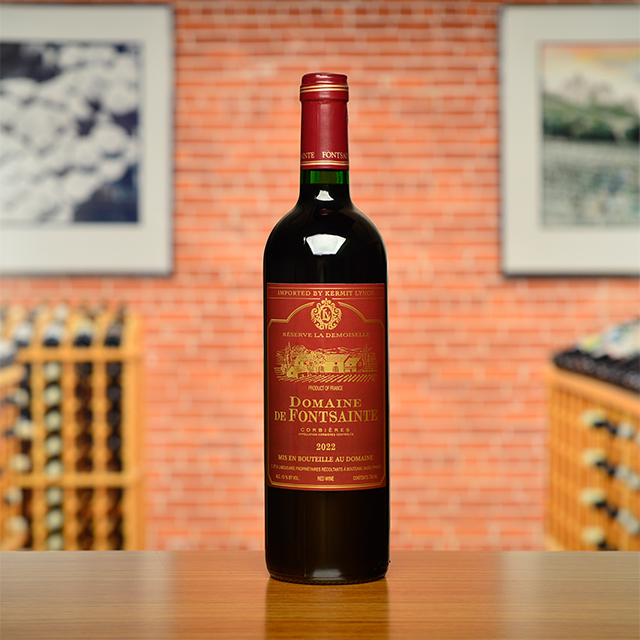A Soulful and Age-Worthy Red from the South of France
A Soulful and Age-Worthy Red from the South of France
by Tom Wolf by Tom Wolf
2019 Corbières Rouge “Réserve La Demoiselle”
2019 Corbières Rouge “Réserve La Demoiselle”
Domaine de Fontsainte France | Languedoc-Roussillon | Corbières
I wish you could have tasted the 1982 Demoiselle I pulled from my cellar recently. Ten years old, at its peak, incredibly delicious…Cellar an inexpensive wine? I know, not many collectors do. Too bad. If you like, though, we will charge you more for it so you won’t feel weird. Anything to please the customer.
—Kermit Lynch, February 1993
When I first started working at Kermit Lynch Wine Merchant, I couldn’t resist asking my veteran colleagues which of our imports filled their cellars (which often meant a rented locker in a climate-controlled warehouse). I imagined decades-old bottles of Chablis, Bandol, and Châteauneuf-du-Pape lying untouched, waiting to be opened at the perfect time.
I was partly right—my colleagues had these bottles here and there—but to my surprise, the answer I got most often was not an exalted name in Burgundy or the Rhône Valley, but one of the extraordinary bargains of our portfolio, from an underappreciated region of France we know to produce great quality and value: Domaine de Fontsainte’s Corbières “La Demoiselle.”
Digging deeper into this cuvée’s origins, it maybe shouldn’t have been a surprise after all. Hailing from the rugged and windswept hills of Corbières, which teem with garrigue and olive groves, La Demoiselle delivers a glorious taste of the South. Made mostly from the Languedoc’s great red grape, Carignan, from vines planted as far back as 1904, this rouge achieves that rare feat of delivering class, charm, and complexity whether you open it right after release or twenty years later, as a magnificently fresh and silky bottle from the 2001 vintage proved last week. With notes of dark fruit, leather, and spice, and an abundance of soul, the 2019 vintage is no exception. It’s no wonder why my colleagues were stashing cases of this wine away to drink over many years. I, for one, plan to open this bottle many more times in the decades to come.
This rouge achieves that rare feat of delivering class, charm, and complexity whether you open it right after release or twenty years later.
| Wine Type: | red |
| Vintage: | 2019 |
| Bottle Size: | 750mL |
| Blend: | 60% Carignan, 30% Grenache Noir, 10% Mourvèdre |
| Appellation: | Corbières |
| Country: | France |
| Region: | Languedoc-Roussillon |
| Producer: | Domaine de Fontsainte |
| Winemaker: | Bruno Laboucarié |
| Vineyard: | Carignan planted in 1904 |
| Soil: | Silica, clay, limestone (gravelly with large galets, or rounded stones) |
| Aging: | 60% of wine ages 8-12 months in French oak barrels, remainder in cement tank |
| Farming: | Lutte Raisonnée |
| Alcohol: | 14.5% |


































